#the scrublands
Explore tagged Tumblr posts
Text

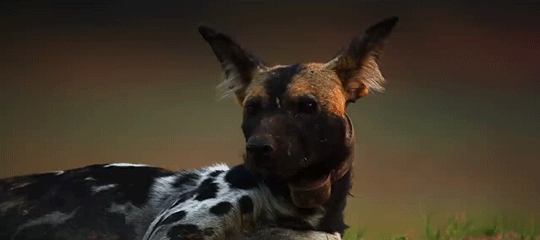
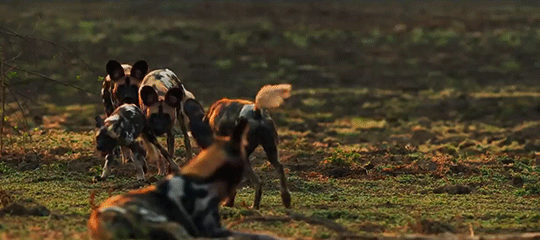

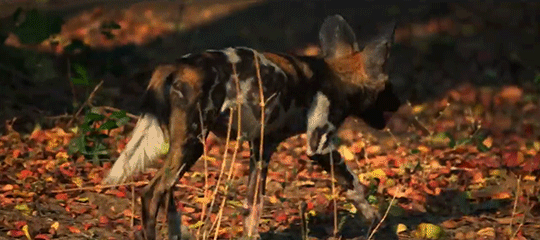

African wild dogs, or painted wolves, are the bulkiest of the African canids. Their fur is also unique in that they have no undercoat, and gradually shed their fur as they age, until adults are almost completely bare. ©Love Nature
#painted wolf#african wild dog#africa#zambia#South Luangwa National Park#savannah#scrubland#mammalia#carnivora#request
3K notes
·
View notes
Text
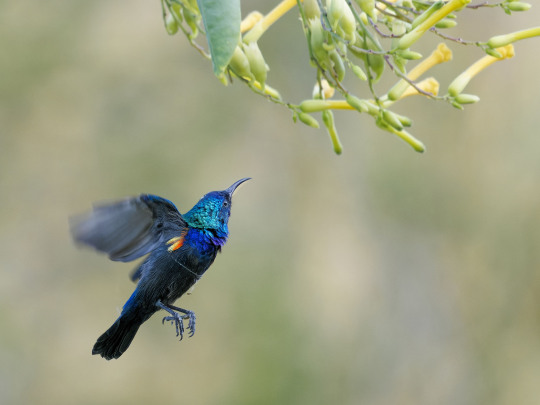
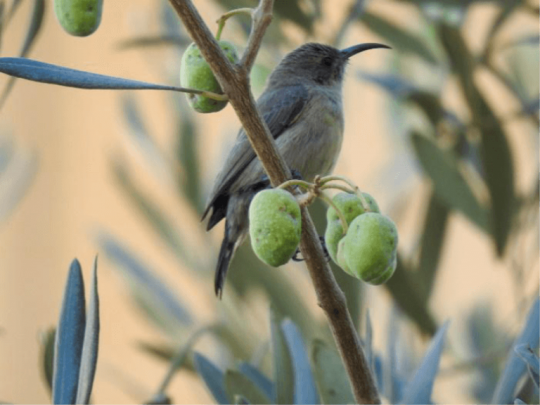
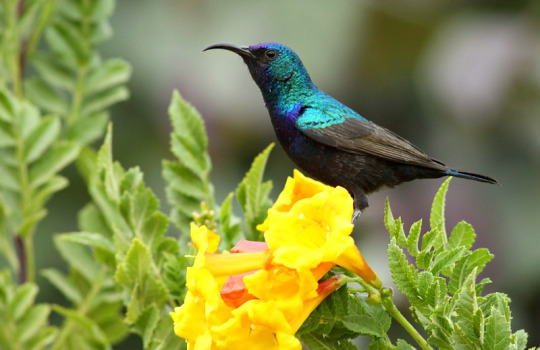
The Palestine Sunbird Persists
The Palestine sunbird, also known as the orange-tufted sunbird (Cinnyris osea) is the national bird of Palestine, and often seen as a symbol of resistance and hope. This species occurs in dry climates, particularly desert, scrubland, and savannahs, but can also be found in orchards and gardens where flowers are abundant. In addition to the Levant, C. osea occurs throughout the southwest cost of Saudia Arabia and the coasts of Yemen and Oman in the south.
C. osea is a small bird, 8 to 12 cm (3.1-4.7 in) long with a wingspan of only 14 to 16 cm (5.5-6.2 in). Males weigh on average 7.6 g (0.26 oz) and females are slightly smaller, at about 6.8 g (0.24 oz). Males are quite easy to identify due to their striking plumage; their feathers are iridescent, appearing dark until they shimmer glossy blue or green, with orange tufts at the side of the breast. In contrast females are fairly drab; grey-brown with a lighter underside. The beaks of the Palestine sunbird are also noted for their distinctively long and curved, which they have developed to efficiently feed on nectar.
Although not directly part of the hummingbird family, the Palestine sunbird shares many similarities with the group. Its diet consists of nectar, and is supplemented with insects. Their tongues are long, and brush-like, and the shape of their beak allows them to reach down to the base of the flower. For flowers that are , they will use their sharp beaks to pierce the side and access the nectar directly. All this is done at very high speeds, but unlike hummingbirds the Palestine sunbird cannot hover in place, and must land in order to feed. Because of their primary reliance on nectar, the orange-tufted sunbird is an important pollinator in its native region. Adults are rarely predated upon, but eggs and young are often targets for lizards, snakes, and birds of prey.
Reproduction begins in June, and continues through October. Males establish and defend territories, and court females by singing to attract a potential mate, then chasing her until she perches to signal her acceptance. Following the pairing, the two construct a purse-like nest, sometimes with a porch-like structure, that hangs from a branch. In this nest, 1-2 eggs are laid, and are incubated primarily by the female, while the male provides her food. The eggs take 13 to 14 days to hatch, and chicks are taken care of by both parents for an additional 14 to 21 days. Individuals can live up to 5 years in the wild.
Conservation status: The Palestine sunbird has a large range and population, and is thus considered Least Concern by the IUCN. Its primary threat is habitat loss due to agriculture and urban development.
If you send me proof that you’ve made a donation to UNRWA or another organization benefiting Palestinians, I’ll make art of any animal of your choosing.
Remember, the donation can be in any amount– every dollar counts!
Photos
Jorrit Vlot
Dula Alhashimi
Rana Hijawi
#Palestine sunbird#Passeriformes#Nectariniidae#sunbirds#perching birds#birds#deserts#desert birds#scrubland#scrubland birds#savannah#savannah birds#urban fauna#urban birds#middle east#animal facts#biology#zoology#ecology#free palestine
1K notes
·
View notes
Text






Damaraland (2) (3) (4) (5) (6) by Kandukuru Nagarjun
49 notes
·
View notes
Text

He is, in fact, not listening 🌙
#original characters#ocs#illustration#illustrator#artwork#character design#comics#the sun prince#the moon shepherd#stars#You can see the coastal scrubland of the Candle Kingdom!
59 notes
·
View notes
Text


Scrub jays are always goofing around
#photography#original photographers#photographers on tumblr#nature#florida#birds#scrublands#florida scrub jay#bird photography#bird
33 notes
·
View notes
Text
getting luke arnold to say the name "flint" in an entirely different piece of media is an insane move
54 notes
·
View notes
Text












Luke Arnold as Martin Scarsden SCRUBLANDS | 1.01
65 notes
·
View notes
Text

New Instagram story from Luke Arnold today, recap on first season of Scrublands, you can watch full clip here
11 notes
·
View notes
Text
Look at himmmmmmm (Luke Arnold in Scrublands)
#i'm just saying#thats such s2 john silver vibes#its driving me crazy#he's so fucking good as a lead in this#and PRETTY so painfully pretty#i need him carnally#y'all please watch this show get weird about it with me#(yes its possible as me how 🏴☠️)#scrublands#scrublands spoilers#i guess if that's a thing we tag#luke arnold
23 notes
·
View notes
Text
you can tell i've barely even looked at the miami draw bc i only JUST noticed next round is munar-monfils, it's the user alacants special interest draw... sorry jaume but i am firmly on the side of the aged this time.
13 notes
·
View notes
Text

Vincent van Gogh ֍ Forest with scrubland (1887)
In Paris, Van Gogh experimented with the dotting technique of the pointillists. This forest scene is a good example of this. He covered the entire canvas with small strokes of paint. In this way, he created a play of light and shadow on the ground between the trees. The stripe of yellow in the middle suggests sunlight in a clearing further away. Together with the tree trunk on the right, this gives depth to the scene.
Van Gogh drew strength from nature: 'Sometimes it is precisely those places where one no longer feels anything of what is called the civilized world . . . it is sometimes precisely those places that one needs to calm down.'
8 notes
·
View notes
Text

Scrubland by Anthony Avon
16 notes
·
View notes
Text



Believe in the Pink Fairy Armadillo
The pink fairy armadillo, also known as the pichiciego (Chlamyphorus truncatus) is a species of armadillo found only in central Argentina. They reside primarily in sandy flats, scrublands, and grasslands. They are extremely sensitive to environmental changes, and require certain species of shrub as well as copious amounts of compact sand for a suitable habitat.
Pichicegos spend the majority of their time underground, only emerging at night to forage. They feed mainly on ants, and supplement their diet with other insects, especially beetles, larvae worms, as well as various plants and roots. C. truncatus is also sometimes referred to as the 'sand swimmer' due to its ability to burrow quickly through sandy soil.
The pink fairy armadillo is named for its distinctive pink 'shell', composed of 24 leathery segments that are attached to the back via a thin membrane. The rest of the body is covered in fine white hair. These two features help individuals maintain a constant internal temperature despite the extremely hot days and frigid nights of the Argentinian desert. In addition to its unique looks, the pichicego is also notable for being the smallest known armadillo species. Adults can be anywhere from 90–115 mm (3.5–4.5 in) long, and typically weigh about 120 g (4.2 oz).
Very little is known about the mating and reproductive habits of pink fairy armadillos. Based on what is known about similar armadillo species, it is likely that females only have a small litter of 1-3 pups, and they will nurse them for some period of time. However, outside of mating, adults are known to be highly solitary-- though not aggressively territorial.
Conservation status: The pink fairy armadillo is currently listed as Data Deficient by the IUCN, as very little is known about this creature's population size or spread. However, in 2006 it was listed as Near Threatened, and due to its sensitivity to changes in habitat quality or structure it is likely threatened by climate change, habitat destruction, and agricultural activities.
Photos
Mariella Superina
Ivan Gutierrez Lemaitre
Mariella Superina
#pink fairy armadillo#Cingulata#Chlamyphoridae#armadillos#mammals#deserts#desert mammals#scrubland#scrubland mammals#grasslands#grassland mammals#south america#southern south america
246 notes
·
View notes
Text




Spring Mountain Ranch State Park (2) (3) (4) by Reese Griffith
Via Flickr:
(1) Buckhorn Cholla. I like how the light glows on the spines. This cactus reminds me of balloon animals. (2) Yerba Mansa. These grow thick in the Ash tree grove near a spring. I'm hoping to catch them in bloom soon. (3) Ash Grove. The way the light comes through these trees onto the grass is magical for me. (4) Desert Creek.
#golden light#plantlife#scrublands#shrublands#cacti#buckhorn cholla#yerba mansa#trees#creeks#desert#rocky terrain#usa#nevada
17 notes
·
View notes
Text
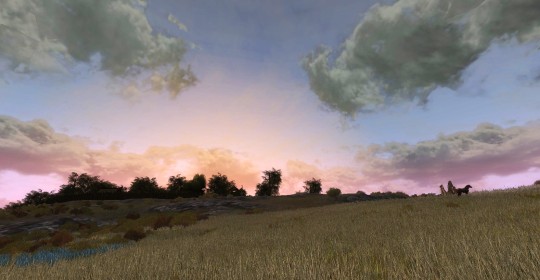

Broadacres sunset
24 notes
·
View notes
